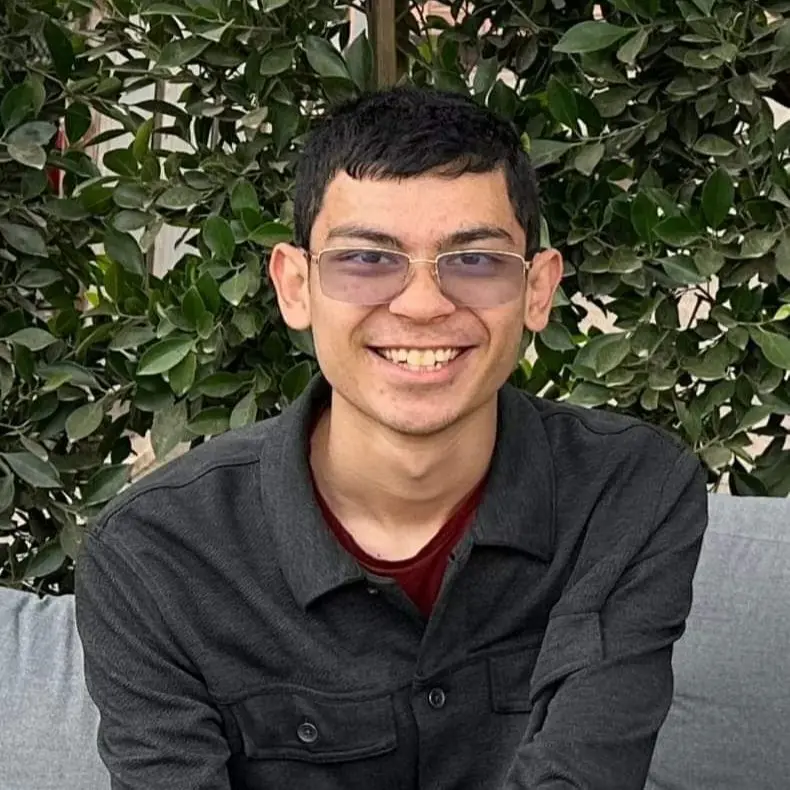Kubishi means “brain” in Owens Valley Paiute, the (critically endangered) language of the Paiute people from Payahuunadü (Owens Valley, California). As a member of the Big Pine Paiute Tribe of the Owens Valley, I decided on this name for my research group because it reflects the autonomous, decentralized, and intelligent aspects of the systems we study. More importantly, though, the name pays homage to my tribe and to all indigenous peoples whose land we work, live, and play on.
Land Acknowledgement
We acknowledge that the land we work and live on is the traditional ancestral territory of the Tongva people. This land, which holds great historical, spiritual, and personal significance for its original stewards, continues to be inhabited and enriched by the Tongva people. We recognize their enduring presence and the contributions they make to our community, despite the challenges they have faced historically and continue to confront.
Research Topics
cooperative-robots decentralized-computing distributed-computing online-algorithms distributed-ledger-technology internet-of-things artificial-intelligence language-revitalization large-language-models
Posts
- The Cow Path Problem - 07/24/2024
- LLMs and Endangered Language Revitalization - 03/15/2024
- Task Scheduling Algorithms - 03/15/2024
People
Previous Members
Projects
Publications
- Adapting Classic Scheduling Heuristics for Online Execution under Uncertainty. Jason Chamorro, Gabriel Twigg-Ho, Jared Coleman, Tainã Coleman, Bhaskar Krishnamachari, Mohammadali Khodabandehlou. To Appear at WORKS @ SC25 - The 20th Workshop on Workflows in Support of Large-Scale Science. 11/17/2025
- Optimal Delivery with a Faulty Drone. Jared Coleman, Evangelos Kranakis, Danny Krizanc, Oscar Morales-Ponce. 37th Canadian Conference on Computational Geometry (CCCG 2025). 08/15/2025
- Crowd-SFT: Crowdsourcing for LLM Alignment. Alex Sotiropoulos, Linus Lei, Jared Coleman, Bhaskar Krishnamachari, Sulyab Thottungal Valapu. DAPPS 2025 - The 7th IEEE International Conference on Decentralized Applications and Infrastructures. 07/24/2025
- Evaluating the Impact of Algorithmic Components on Task Graph Scheduling. Jared Coleman, Ravi Vivek Agrawal, Ebrahim Hirani, Bhaskar Krishnamachari. JSSPP 2025 - The 28th Workshop on Job Scheduling Strategies for Parallel Processing. 06/03/2025
- PISA: An Adversarial Approach To Comparing Task Graph Scheduling Algorithms. Jared Coleman, Bhaskar Krishnamachari. To Appear at IPDPS 2025 - The 39th International Parallel and Distributed Processing Symposium. 06/03/2025
- Evaluating Scheduling Algorithms for Adaptive Orchestration in Federated Tactical Edge Cloud Environments. Alessandro Amato, Harrie Bastiaansen, Jared Coleman, Willem Datema, Mattia Fogli, Johan van der Geest, Bhaskar Krishnamachari, Thomas Kudla, Pablo Sanchez, Niranjan Suri. ICMCIS 2025 - The International Conference on Military Communication and Information Systems. 05/13/2025.
- Extended Abstract: A Chatbot for Endangered Language Research. Diego Cuadros, Jared Coleman, Ruben Rosales, Glenn Nelson. AmericasNLP @ NAACL 2025 - 5th Workshop on NLP for Indigenous Languages of the Americas. 05/04/2025.
- Community Voices on Digital Tools for Owens Valley Paiute. Jared Coleman. LMU Digital Commons. 01/01/2025
- Linear Search with Probabilistic Detection and Variable Speeds. Jared Coleman, Oscar Morales-Ponce. To Appear at IWOCA 2025 - The 36th International Workshop on Combinatorial Algorithms. 01/01/2025
- Multimodal Search on a Line. Jared Coleman, Dmitry Ivanov, Evangelos Kranakis, Danny Krizanc, Oscar Morales-Ponce. To Appear at SIROCCO 2025 - 32nd International Colloquium on Structural Information and Communication Complexity. 01/01/2025
- No-Resource Languages. Jared Coleman, Bhaskar Krishnamachari, Khalil Iskarous, Ruben Rosales. AmericasNLP @ NAACL 2024 - 4th Workshop on NLP for Indigenous Languages of the Americas. 01/01/2024
- Linear Search for an Escaping Target with Unknown Speed. Jared Coleman, Dmitry Ivanov, Evangelos Kranakis, Danny Krizanc, Oscar Morales-Ponce. IWOCA 2024 - 35th International Workshop on Combinatorial Algorithms. 01/01/2024.
- Online Allocation of Sensing and Computation in Large Graphs. Xinlin Li, Merve Karakas, Osama A Hanna, Mehrdad Kiamari, Jared Coleman, Christina Fragouli, Bhaskar Krishnamachari, Gunjan Verma. IEEE CIC 2023 - International Conference on Collaboration and Internet Computing. 11/01/2023
- Line Search for an Oblivious Moving Target. Jared Coleman, Evangelos Kranakis, Danny Krizanc, Oscar Morales-Ponce. OPODIS 2022 - International Conference on Principles of Distributed Systems. 02/15/2023
- The Snow Plow Problem: Perpetual Maintenance by Mobile Agents on the Line. Jared Coleman, Oscar Morales-Ponce. ICDCN 2023 - International Conference on Distributed Computing and Networking. 01/04/2023
- DARSAN: A Decentralized Review System Suitable for NFT Marketplaces. Sulyab Thottungal Valapu, Tamoghna Sarkar, Jared Coleman, Anusha Avyukt, Hugo Embrechts, Dimitri Torfs, Michele Minelli, Bhaskar Krishnamachari. ICBC 2023 - International Conference on Blockchain. 01/01/2023
- Delivery to Safety with Two Cooperating Robots. Jared Coleman, Evangelos Kranakis, Danny Krizanc, Oscar Morales-Ponce. SOFSEM 2023 - International Conference on Current Trends in Theory and Practice of Computer Science. 01/01/2023
- Search and Rescue on the Line. Jared Coleman, Loránd Cheng, Bhaskar Krishnamachari. SIROCCO 2023 - 30th International Colloquium on Structural Information and Communication Complexity. 01/01/2023
- Graph Convolutional Network-based Scheduler for Distributing Computation in the Internet of Robotic Things. Jared Coleman, Mehrdad Kiamari, Lillian Clark, Daniel D'Souza, Bhaskar Krishnamachari. MILCOM 2023 WS-7 - Workshop On The Internet Of Things For Adversarial Environments. 11/28/2022
- Multi-Objective Network Synthesis for Dispersed Computing in Tactical Environments. Jared Coleman, Eugenio Grippo, Bhaskar Krishnamachari, Gunjan Verma. SPIE Defense + Commercial Sensing. 06/08/2022
- Network Synthesis for Tactical Environments: Scenario, Challenges, and Opportunities. Tzanis Anevlavis, Jonathan Bunton, Jared Coleman, Mine Dogan, Eugenio Grippo, Abel Souza, Christina Fragouli, Bhaskar Krishnamachari, Matthew Maness, Karl Olson, Prashant Shenoy, Paulo Tabuada, Gunjan Verma. SPIE Defense + Commercial Sensing. 06/06/2022
- Robotic Sorting on the Grid. Jared Coleman, Oscar Morales-Ponce. ICDCN 2022 - 23rd International Conference on Distributed Computing and Networking. 01/04/2022
- Message Delivery in the Plane by Robots with Different Speeds. Jared Coleman, Evangelos Kranakis, Oscar Morales-Ponce, Danny Krizanc. SSS 2021 - 23rd International Symposium on Stabilization, Safety, and Security of Distributed Systems. 01/01/2021
- The Pony Express Communication Problem. Jared Coleman, Evangelos Kranakis, Oscar Morales-Ponce, Danny Krizanc. IWOCA 2021 - 32nd International Workshop on Combinatorial Algorithms. 01/01/2021
- Minimizing The Maximum Distance Traveled To Form Patterns With Systems of Mobile Robots. Jared Coleman, Evangelos Kranakis, Oscar Morales-Ponce, Jorge Urrutia, Birgit Vogtenhuber. CCCG 2020 - 32nd Canadian Conference on Computational Geometry, August 5-7, 2020. 06/28/2020
Media Appearances
- Can A.I. Help Revitalize Indigenous Languages? - Smithsonian Magazine - 07/31/2025
- How some endangered language speakers get creative with AI for preservation efforts - WHYY, NPR - 12/09/2024
- Revitalizing Critically Endangered Languages via Large Language Models - LMU Newsroom - 11/14/2024
- Imagine Hearing A Distant Relative Telling Stories in a Nearly Forgotten Language. What Would You Do? - USC Viterbi School of Engineering - 06/20/2024











